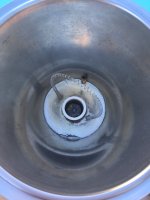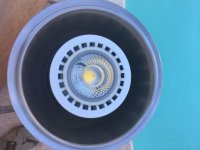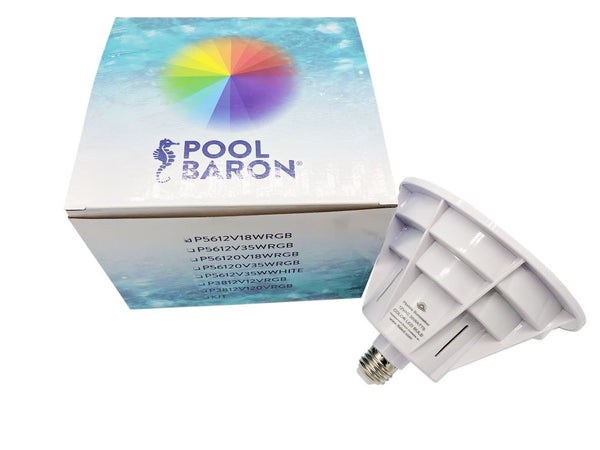I have an old(er) Amerlite pool light housing that I have put a standard LED PAT38 outdoor flood light into. The bulb is GE brand, 32W outdoor PAR38 bulb, one color (daylight), 3,000 lumens. It is plenty good for our 9,000 gal pool. It does what I want. Since it is LED and only 32W, it does not heat up like the typical 500W incandescent bulb (I have one of those). I have gotten good at reassembling the Amerlite fixture to be leak proof and tight.
Here is my problem: after a day or two of near continuous use, it shorts out/trips the circuit breaker. When I pull the fixture out of the pool, there is no water inside it. It is dry except for some condensation on the lens, which I attribute to moisture in the air trapped in the fixture (could be wrong here). After I remove the bulb from the socket, inspect the housing and put the bulb back in, and reassemble it, it comes on fine. No short. I have to add that I put some caulk around the housing where the wire comes out the back. I was having leak issues and suspected that maybe water was coming in from the back. There is a small mound of caulk around that wire now, and it is well sealed. Like I said, no pooled water of any kind in the housing after being submerged for a couple of days.
I am attaching a couple of pictures because I have some questions. In the picture on the left (w/o a bulb in the socket), there are two things I don't know what they are or how they play a role in the function of the unit:
1) The small springy wire that projects from the base and over the socket. With the bulb installed, this is simply pushed out of the way a bit, and leans against the bulb housing. What is that wire for?
2) That little brown thing at the top of the housing that protrudes from the back of the fixture about 1/2-in. It kind of looks like some rolled-up paper wrapping, or like the end of a cigarette. What is that thing for?
The picture on the right shows the LED installed in the fixture. I have reassembled the unit, and the light comes on again as expected.
Here is my problem: after a day or two of near continuous use, it shorts out/trips the circuit breaker. When I pull the fixture out of the pool, there is no water inside it. It is dry except for some condensation on the lens, which I attribute to moisture in the air trapped in the fixture (could be wrong here). After I remove the bulb from the socket, inspect the housing and put the bulb back in, and reassemble it, it comes on fine. No short. I have to add that I put some caulk around the housing where the wire comes out the back. I was having leak issues and suspected that maybe water was coming in from the back. There is a small mound of caulk around that wire now, and it is well sealed. Like I said, no pooled water of any kind in the housing after being submerged for a couple of days.
I am attaching a couple of pictures because I have some questions. In the picture on the left (w/o a bulb in the socket), there are two things I don't know what they are or how they play a role in the function of the unit:
1) The small springy wire that projects from the base and over the socket. With the bulb installed, this is simply pushed out of the way a bit, and leans against the bulb housing. What is that wire for?
2) That little brown thing at the top of the housing that protrudes from the back of the fixture about 1/2-in. It kind of looks like some rolled-up paper wrapping, or like the end of a cigarette. What is that thing for?
The picture on the right shows the LED installed in the fixture. I have reassembled the unit, and the light comes on again as expected.






